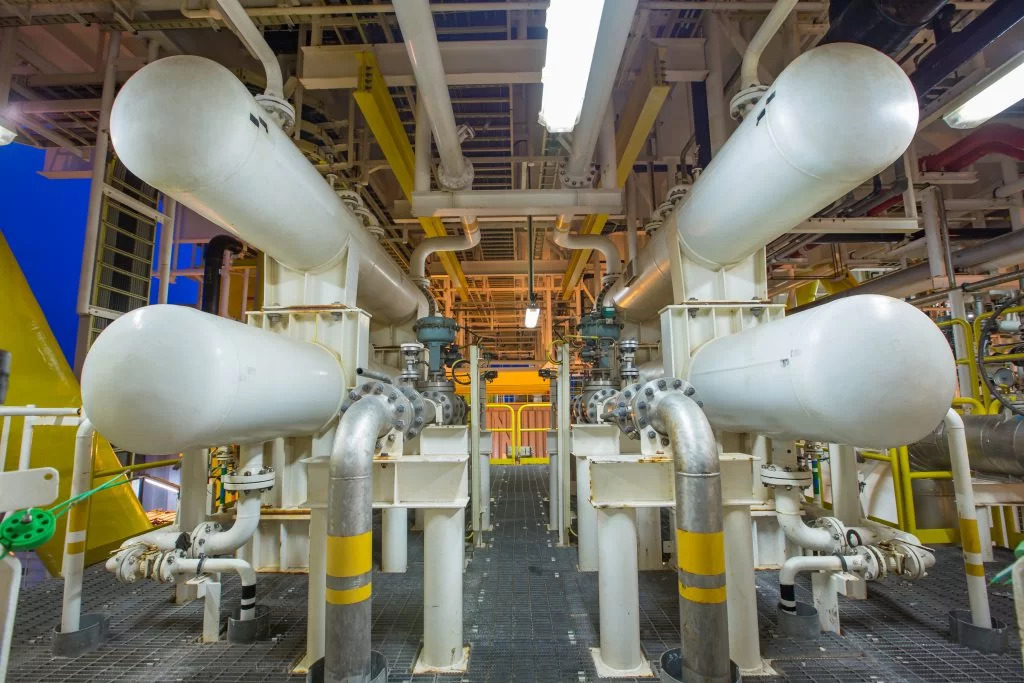Heat exchangers are the unsung heroes of countless industrial processes, silently ensuring efficient heat transfer across various applications. Among the array of heat exchangers, the plate and frame heat exchanger emerges as a star performer in the industrial realm. In this article, we will explore the remarkable capabilities and applications of plate and frame heat exchangers, shedding light on their pivotal role in industrial heat exchange.
Plate and Frame Heat Exchanger: An Overview
A plate and frame heat exchanger is a type of heat exchanger that comprises a series of corrugated plates and frames, stacked together to facilitate heat exchange between two fluids. These fluids can be gases or liquids, and the heat transfer occurs without direct contact between them, ensuring the separation of the two mediums.
Key Components of a Plate and Frame Heat Exchanger
Understanding the fundamental components of a plate and frame heat exchanger is crucial to appreciate its functionality:
1. Plates:
The heart of the heat exchanger, these corrugated plates provide a substantial surface area for heat transfer to take place. The corrugations enhance turbulence within the fluid channels, optimizing heat exchange efficiency.
2. Frame:
The frame holds the plates together and provides support for the entire heat exchanger assembly. It also serves as the attachment point for piping and connections.
3. Gaskets:
Gaskets are positioned between the plates to create tight seals, preventing any leakage or mixing of the two fluids. The choice of gasket material depends on the specific application and the compatibility with the fluids involved.
4. Connections:
Inlet and outlet connections on the frame allow the hot and cold fluids to enter and exit the heat exchanger, enabling the controlled flow and heat exchange process.
Advantages of Plate and Frame Heat Exchangers
Plate and frame heat exchangers offer a host of advantages that make them well-suited for a wide range of industrial applications:
1. High Efficiency:
The large surface area of the plates promotes efficient heat transfer, resulting in excellent thermal performance.
2. Compact Design:
Plate and frame heat exchangers are notably more compact than their shell and tube counterparts, making them ideal for installations with limited space.
3. Flexibility:
Their modular design allows for flexibility in configuration, making it possible to adapt the heat exchanger to various process requirements.
4. Easy Maintenance:
Disassembly and cleaning of the plates are straightforward, minimizing downtime and maintenance costs.
5. Temperature Control:
These heat exchangers excel at precise temperature control, crucial in many industrial processes.
6. Cost-Effective:
The combination of high efficiency and ease of maintenance results in cost-effective heat exchange solutions.
Industrial Applications of Plate and Frame Heat Exchangers
Plate and frame heat exchangers are a versatile choice for numerous industrial processes. Let’s explore some key applications:
1. HVAC Systems:
In commercial and industrial HVAC (Heating, Ventilation, and Air Conditioning) systems, plate and frame heat exchangers are used for heat recovery, air conditioning, and maintaining comfortable indoor temperatures.
2. Chemical Processing:
The chemical industry employs plate and frame heat exchangers for various processes, including cooling, heating, condensation, and evaporation. They are valued for their resistance to corrosion and ability to handle aggressive chemicals.
3. Power Generation:
Plate and frame heat exchangers are essential components in power plants, where they play a critical role in cooling steam, condensing exhaust gases, and heating feedwater. Their compact design helps optimize space in power plant facilities.
4. Food and Beverage Production:
These heat exchangers are widely used in the food and beverage industry for pasteurization, sterilization, and temperature control during various stages of production. Their sanitary design and ease of cleaning are crucial in maintaining food safety standards.
5. Oil and Gas:
Plate and frame heat exchangers find applications in the oil and gas industry for cooling processes, heat recovery, and maintaining optimal temperatures in equipment and pipelines.
6. Pharmaceuticals:
In pharmaceutical manufacturing, precision and cleanliness are paramount. Plate and frame heat exchangers, with their ability to provide precise temperature control and easy cleaning, are instrumental in pharmaceutical processes.
7. Refrigeration:
Plate and frame heat exchangers are used in industrial refrigeration systems for evaporating and condensing refrigerants, ensuring efficient cooling and temperature control.
Conclusion
Plate and frame heat exchangers have rightfully earned their place as indispensable tools in the industrial world. Their compact design, high efficiency, and adaptability make them the go-to choice for various applications, from chemical processing to food production. Whether it’s maintaining precise temperatures, recovering heat, or facilitating crucial processes, these industrial heat exchangers excel in enhancing industrial operations. In a world where energy efficiency and cost-effectiveness are paramount, plate and frame heat exchangers continue to shine. Their ability to optimize heat exchange while maintaining a small footprint aligns perfectly with the evolving needs of industries striving for sustainability and improved performance. As technology and materials advance, we can expect plate and frame heat exchangers to play an even more prominent role in industrial heat exchange solutions.



